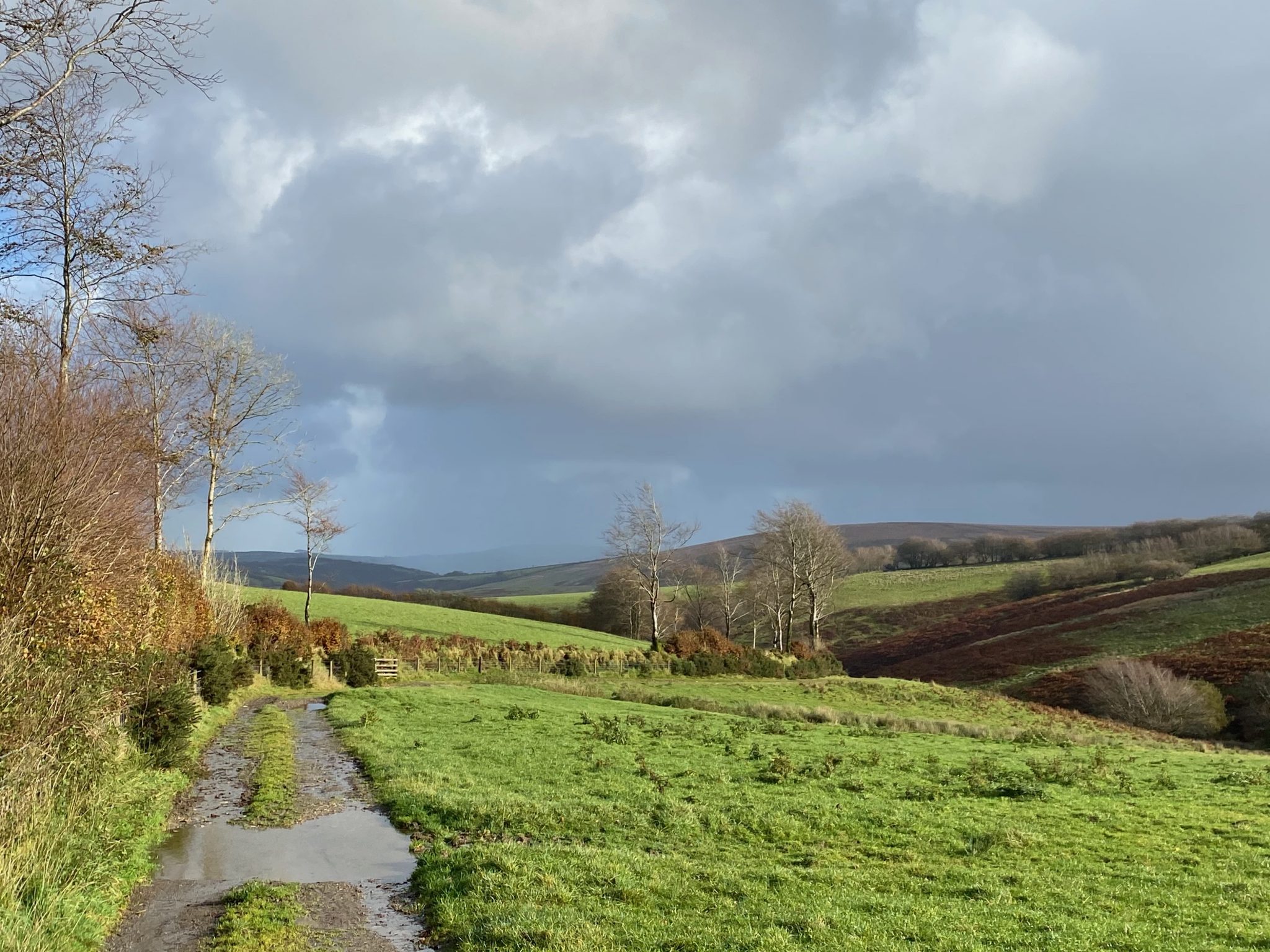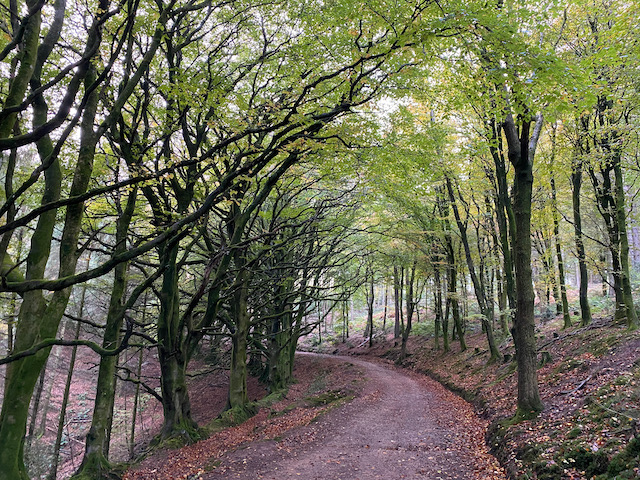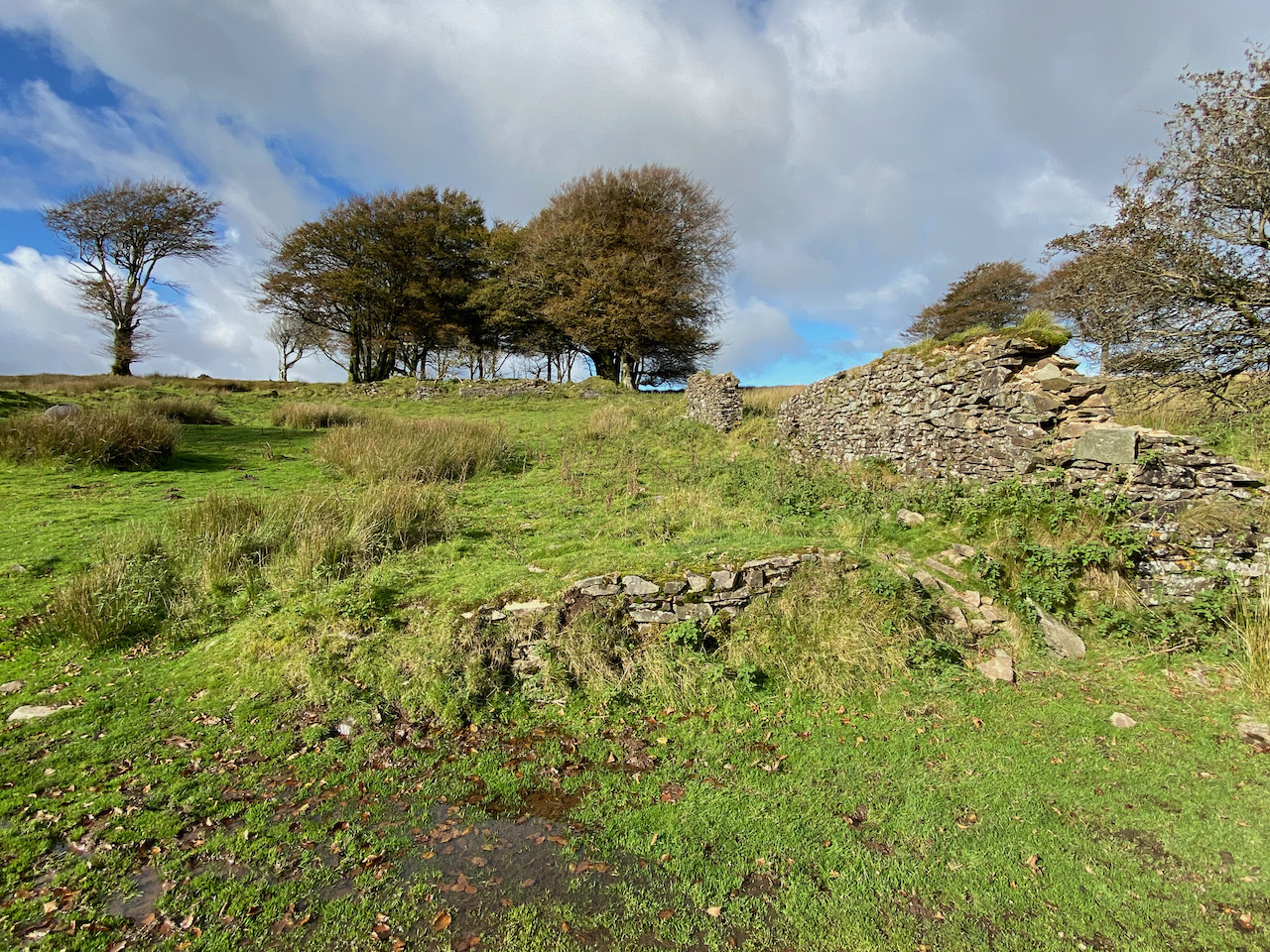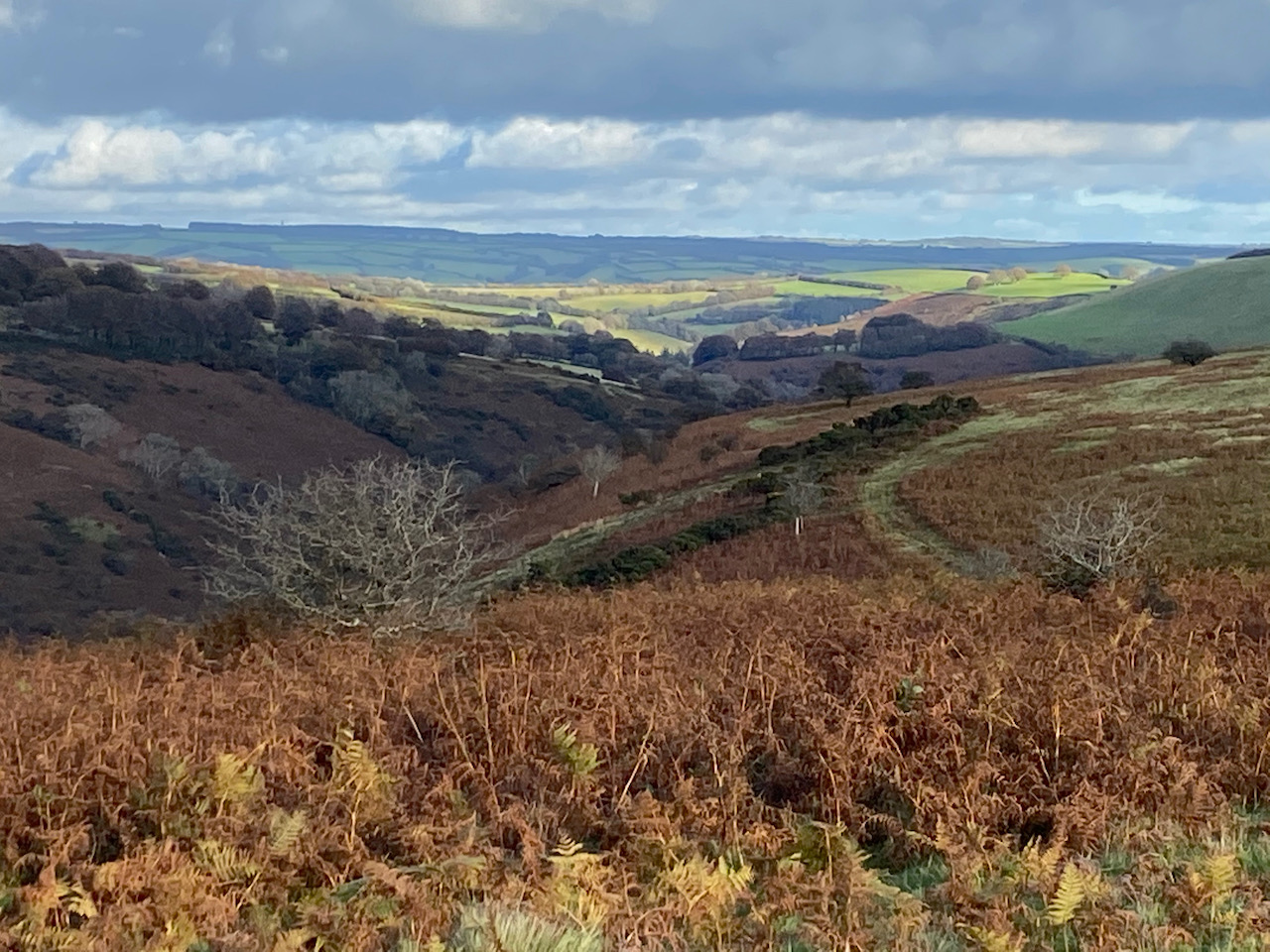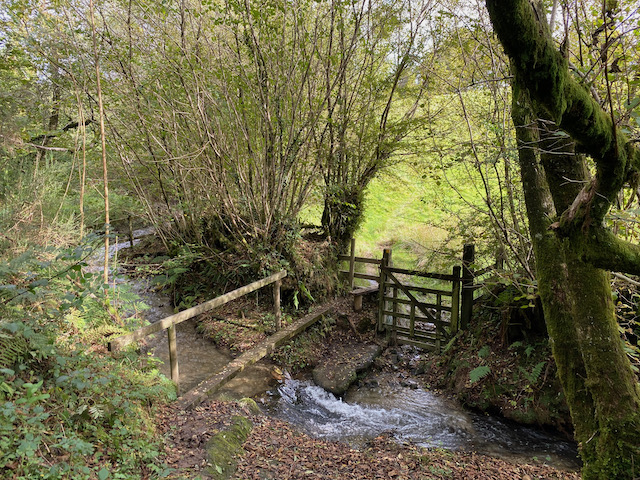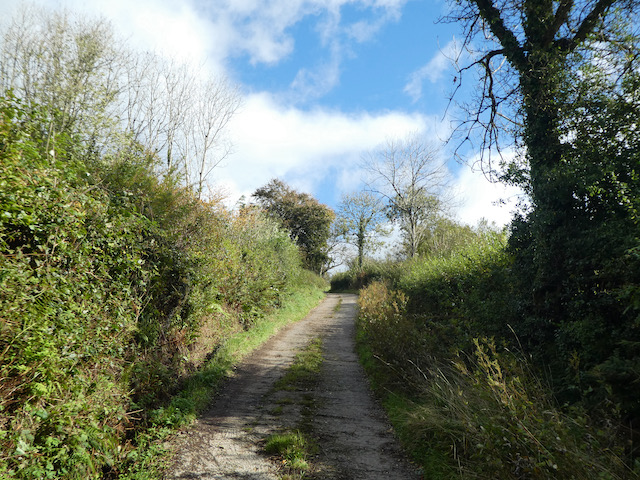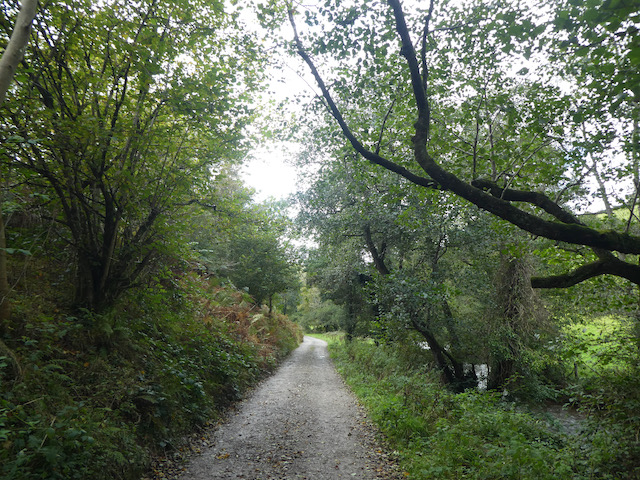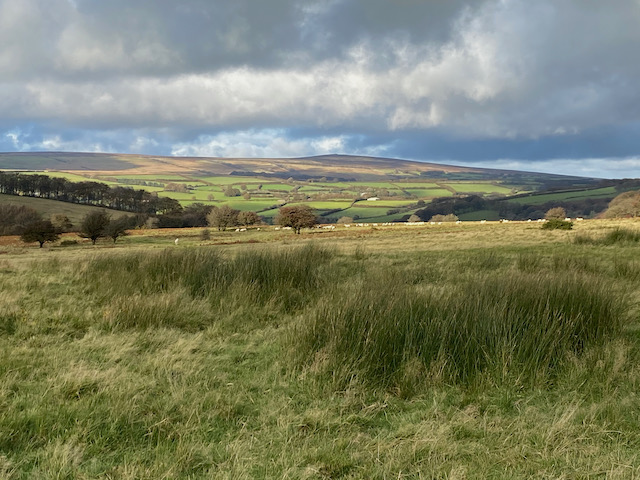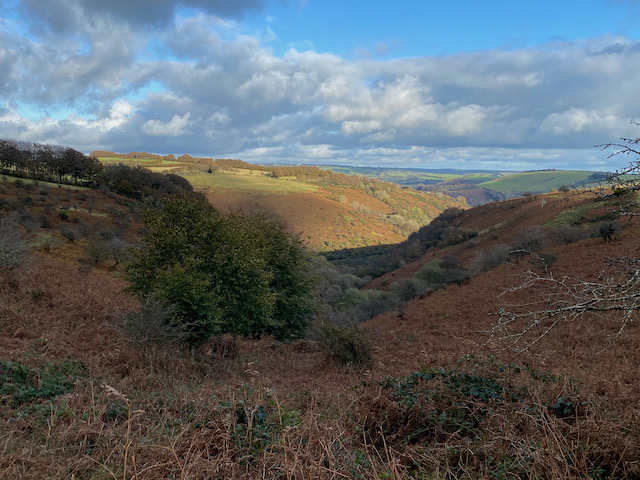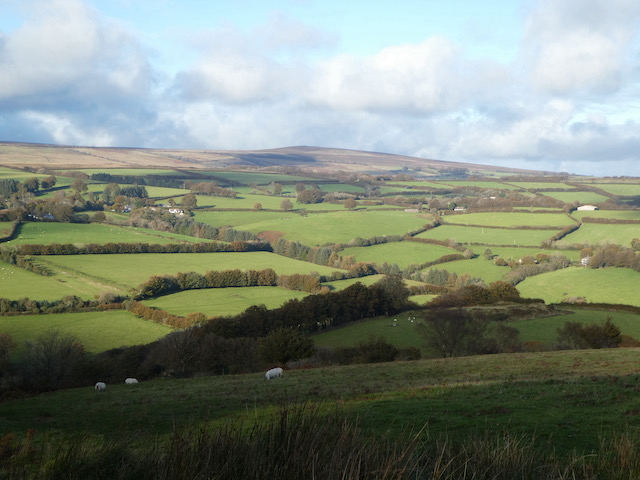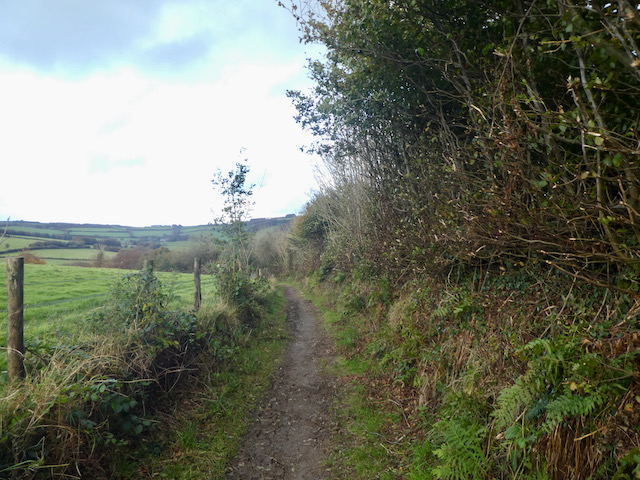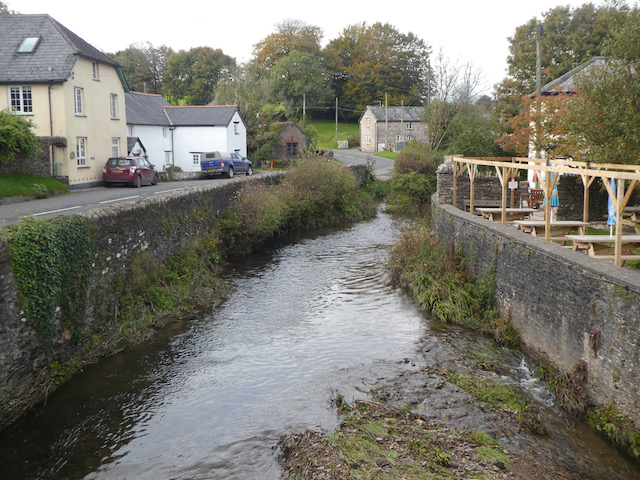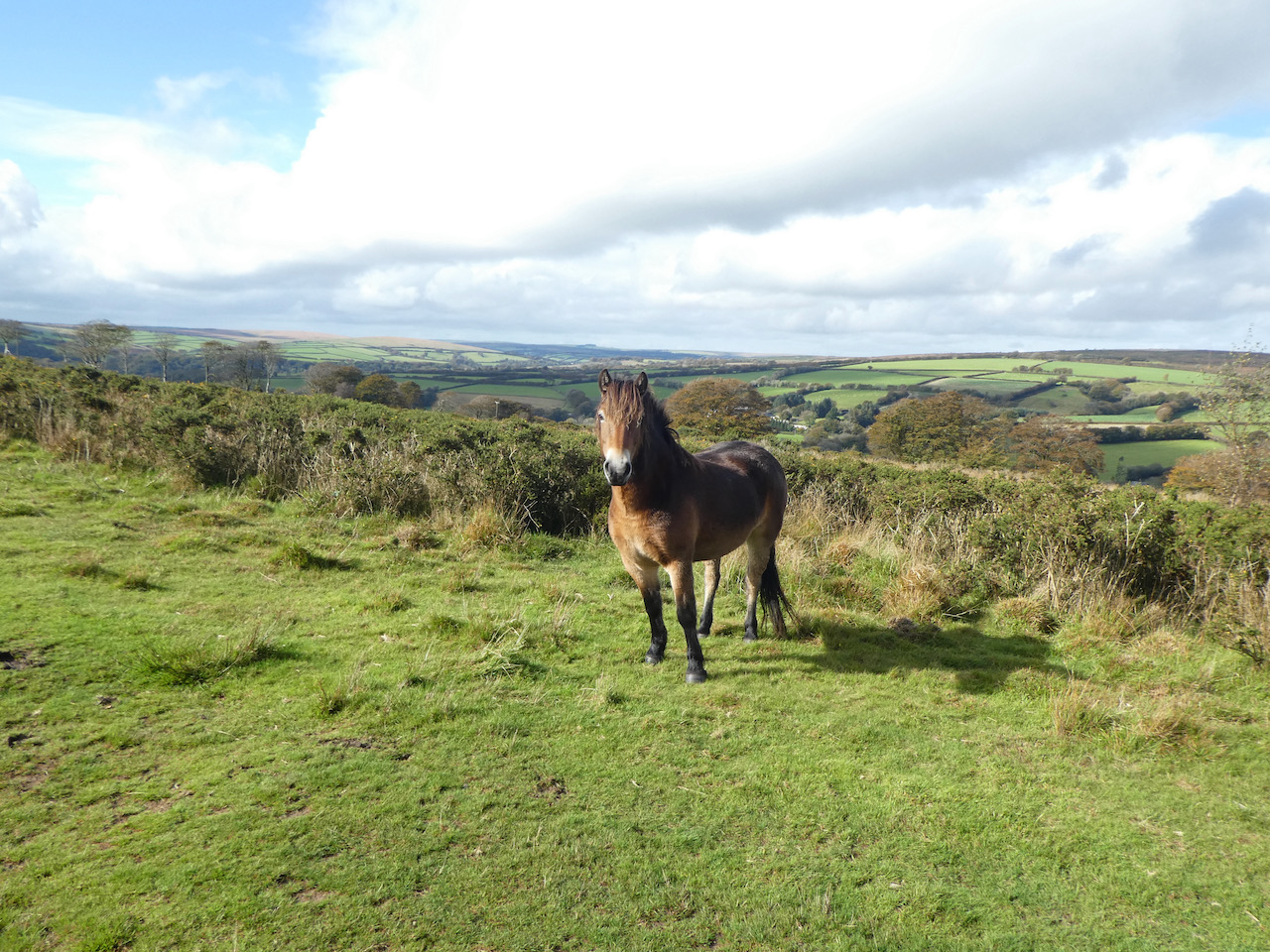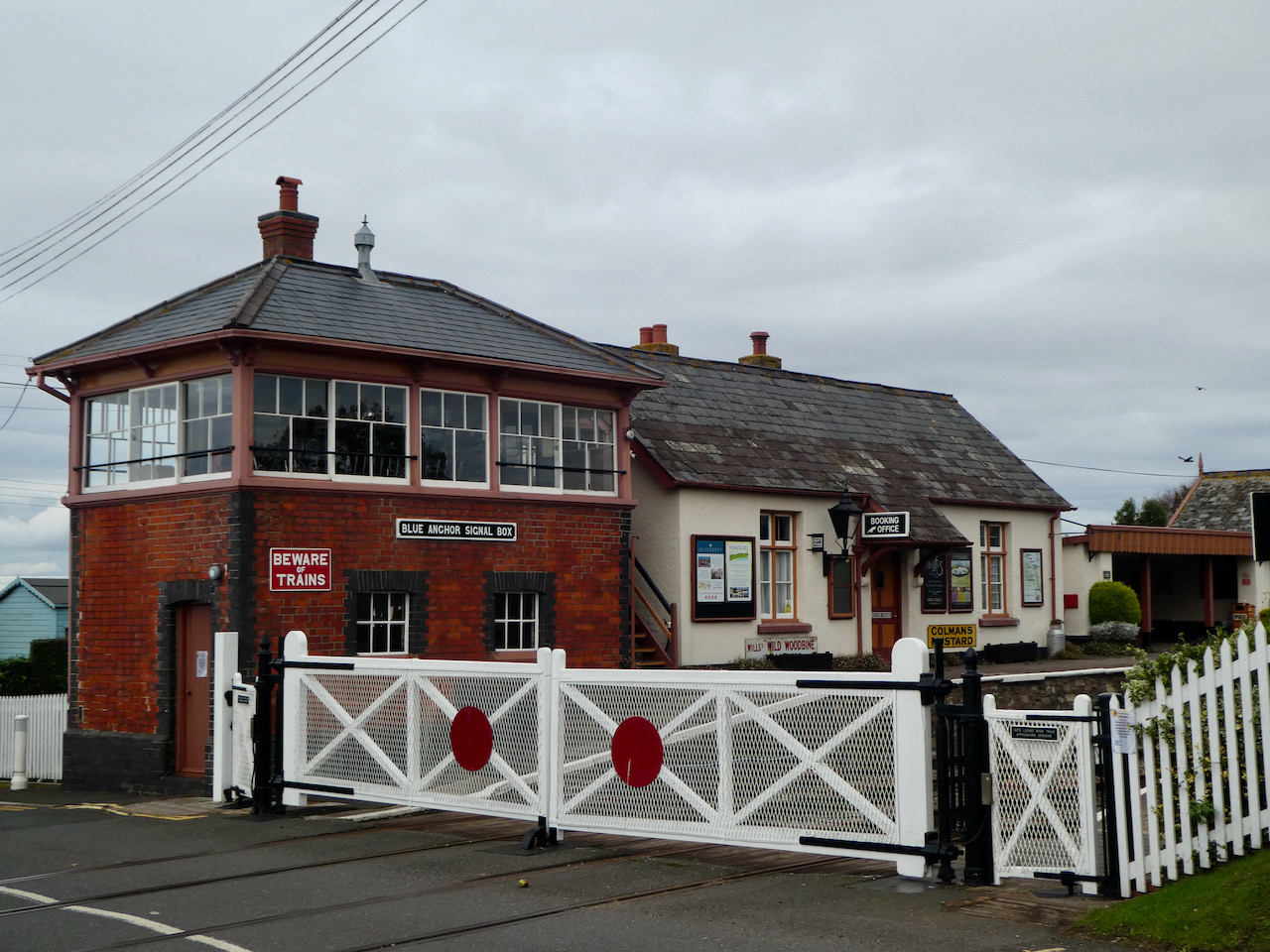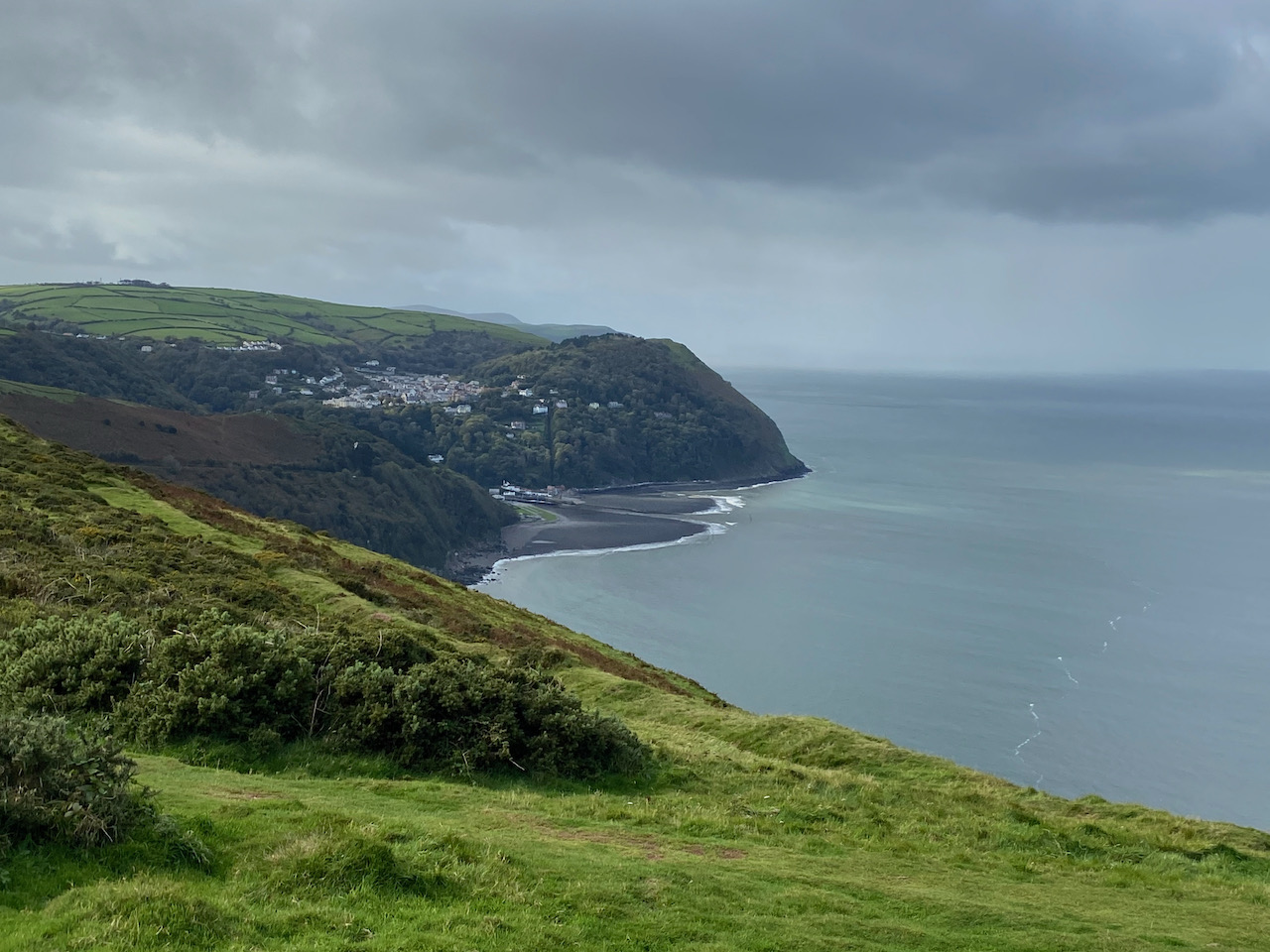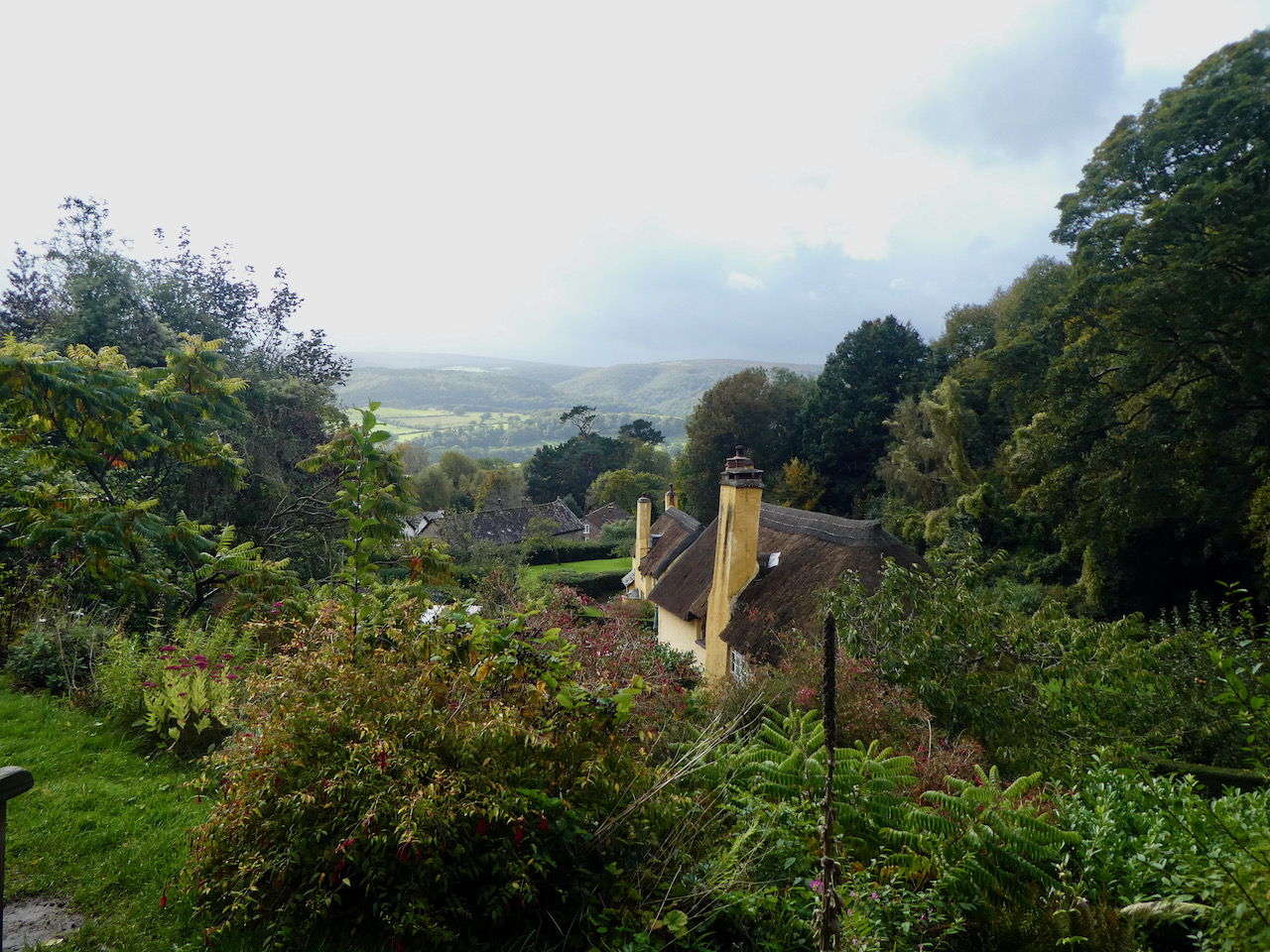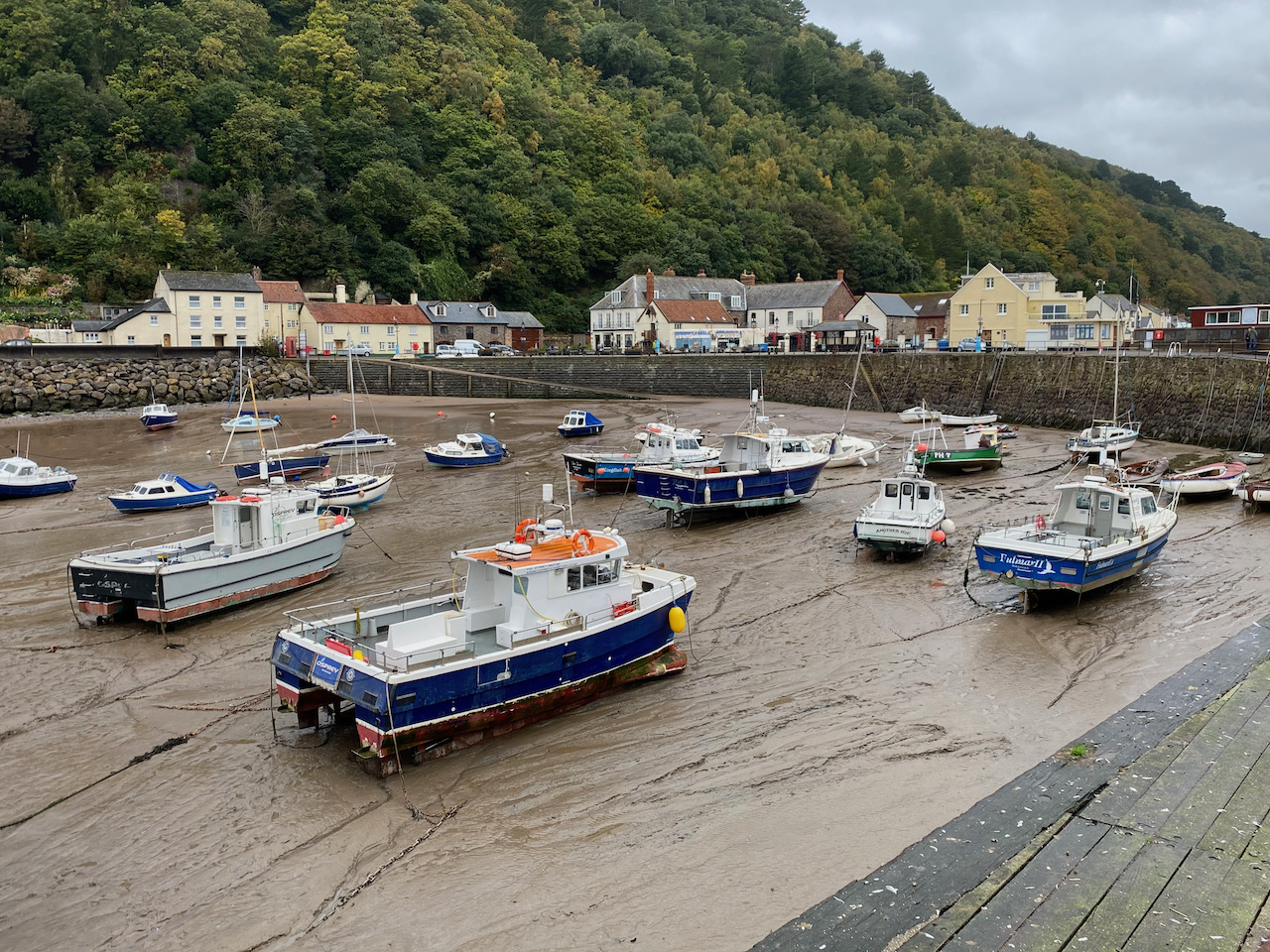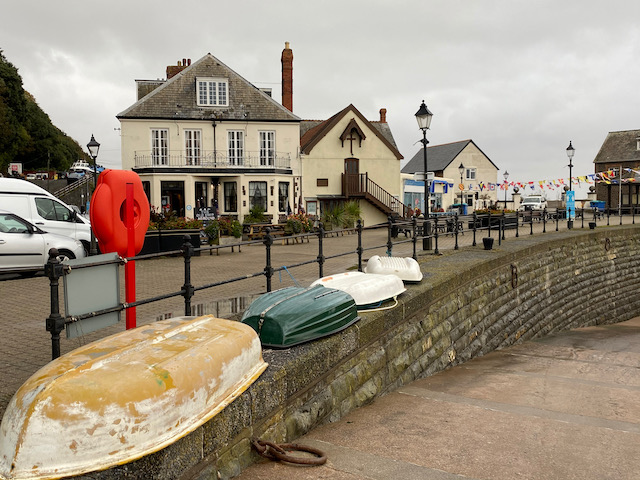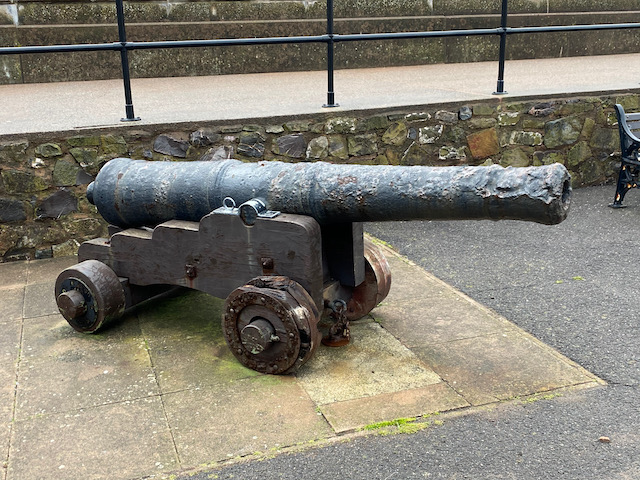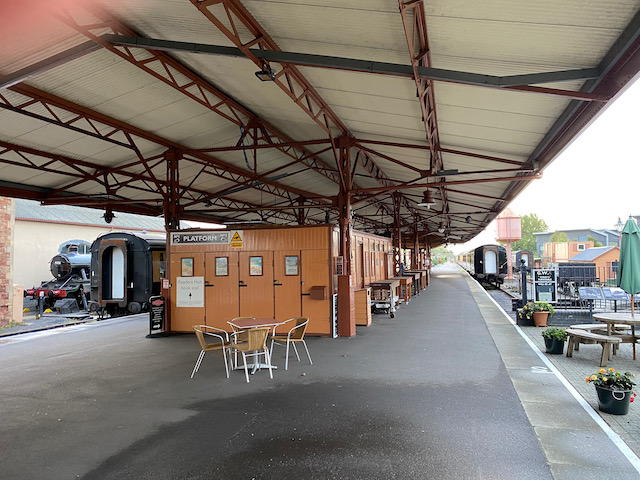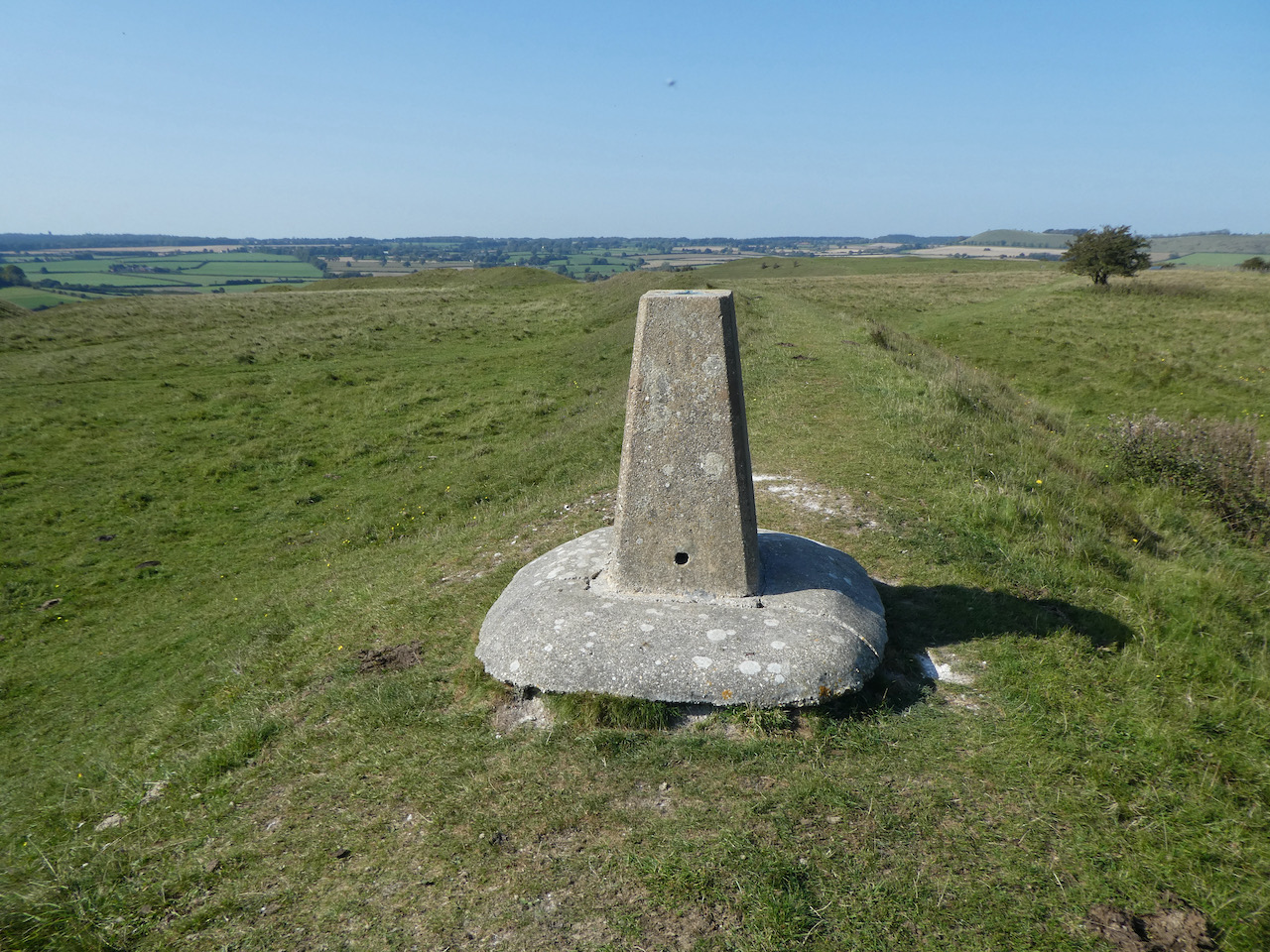The weather forecast suggests I will get wet at some point on my walk today. This is hardly surprising when walking on Exmoor in late October. I don’t mind walking in rain, there is little point in spending money on fancy wet weather walking gear and then sitting inside if there is the slightest sign of precipitation.
Today I am going to walk from Landacre Bridge which is a few miles west of Withypool. The starting point for my walk is the parking area (Grid Ref: SS815360). As expected on arrival at the car park rain is sweeping across the moor in front of me, so it is a case of getting the waterproofs on before I start.
Leaving the car park I follow a clear path heading south to cross a stream and then join a footpath heading east across Withypool Common.

At the hedge line I turn right and follow a path heading south which steadily ascends along the hedge line.

The rain has eased a bit but the odd squall keeps blowing across the moor. After 300 yards I take a path on the right that rises steadily onto the moor heading towards Brightworthy Barrows. The sky briefly clears and I get a cracking view towards Withypool.

As the path starts to level I fork to the right to visit the Withypool Common Ordnance Survey trig pillar at Brightworthy Barrow, this is the 229th trig I have bagged. The rain has stopped but the wind is blowing a gale and Crosby is less than impressed at having to pose for a picture by the trig.

From the trig I pick up a well-used path that heads south across the moor towards a minor road. The recent rain has made this path sodden, but despite the surface water it is still firm underfoot.

On reaching the road I turn right and follow it to pass a cattle grid and continue on to a junction at Withypool Cross. Here I turn right and follow the road steadily downhill in the direction of Landacre.

After 200 yards I turn left to follow a bridleway along a track signposted to Horsen via Sherdon Farm.

This is a fine track with great views as it steadily descends towards Sherdon Bridge.

After crossing the bridge I pass a cottage and stay with the main track to reach the now abandoned Sherdon Farm.

It is an isolated spot and it must have been a harsh existence which even the stunning view could not compensate for. I am sure that at some point the site will be developed, but at the moment it stands as a reminder to the past.

I stay with the track as it passes through gates and then after 350 yards I reach a footpath on the right. I leave the track and take the footpath along the edge of a field of pasture.

After crossing another field the footpath reaches access land on Horsen Hill, I stay with the clear path heading north. I leave the access land to follow a way-marked path around fields to reach a minor road near Horsen Farm.

At the road I turn right and then within a short distance, before reaching the farm, I turn right on a track heading towards Cow Castle.

The track has stunning views and continues steadily downhill to cross a brook at a ford. Fortunately there is a footbridge besides the ford so I can cross without getting wet feet.

Staying with the footpath I continue along a track in a lovely valley.

On reaching the River Barle I take a footbridge over the river and then turn right on the route of the Two Moors Way.

The route is now very straightforward. I stay with the Two Moors Way route markers following the path through an area of cleared forest land and then pass through gates to cross moorland. There are some cracking views as I go along and the storm has blown through so it is now a pleasant autumnal afternoon.

At a junction of footpaths I stay with the Two Moors Way as it sweeps across access land with views down to the Landacre Bridge crossing the River Barle.

Eventually the Two Moors Way leads to Landacre Lane, here I turn right and follow the lane to pass a farm and continue steadily downhill to reach Landacre Bridge. There has been a bridge here across the River Barle since medieval times, apparently it is documented in 1610. The bridge was restored in 1875 and then further work was carried out following flood damage in 1952.

After crossing the bridge it is only a short distance back to the car park, which is now occupied by cattle. Fortunately not the sort of cattle that seem interested in me or Crosby so we are able to reach the car without incident.

I have covered just over nine miles and it has been a cracking wander around the moor. I haven’t seen another walker. Time now to head back to the caravan and plan tomorrow’s route.
You can view this 9 mile walk on OS Maps and download the GPX File Here
To follow our walk you will need Ordnance Survey Outdoor Explorer Map OS9 Exmoor
27th October 2020
© Two Dogs and an Awning (2020)
All information on this site is provided free of charge and in good faith and no liability is accepted in respect of damage, loss or injury which might result from it. To the best of my knowledge the routes are entirely on public rights of way or within areas that are open for public access.
Walking can be hazardous and is done entirely at your own risk. It is your responsibility to check your route and navigate using a map and compass.
